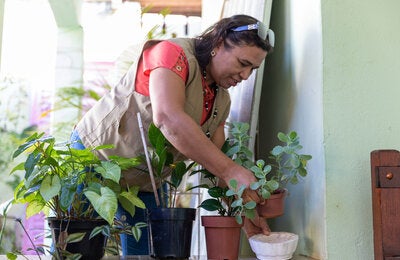
Washington D.C., 8 May 2025 (PAHO) – The Director of the Pan American Health Organization, Dr. Jarbas Barbosa, today met with the Executive Secretary of the Council of Ministers from Central America and the Dominican Republic (SE-COMISCA), Dr. Alejandra Acuña, and the Executive Director of the Mesoamerica Integration and Development Project, Roberto Carlos Salazar Figueroa, to sign the 2025-2031 subregional cooperation strategy with the Central American, Dominican Republic and Mexico subregion (the PAHO subregion known as CAM) .
The CAM subregion, which consists of Belize, Costa Rica, El Salvador, Guatemala, Honduras, Mexico, Nicaragua, Panama and the Dominican Republic, covers a population of over 183.4 million people, 26% of which live in remote and rural areas.
This meeting marks “the culmination of a process of dialogue, agreement, and participatory construction that reflects the commitment of our institutions to the health and well-being of the peoples of Central America, Mexico, and the Dominican Republic,” Dr. Barbosa said during the signing ceremony.
“In a context marked by emerging health threats, migratory flows, food insecurity, and the effects of climate change, subregional cooperation takes on even greater relevance,” he added.
The cooperation strategy outlines four priority areas for the Organization’s technical cooperation in the subregion:
- Strengthen leadership and governance in health to guide resilient, equitable, and sustainable health systems, promoting evidence-based approaches, intersectoral collaboration, and harmonizing the provision of services to guarantee access, coverage, and quality in health.
This includes development and training for human resources in health, implementing an integrated system of monitoring and evaluation of essential public health functions, and supporting digital transformation and the interoperability of digital tools within and between health systems.
- Strengthen the implementation of sub-regional actions for the prevention, control, and elimination of diseases and their risk factors via an approach that promotes interculturality, equity, and the inclusion of vulnerable populations.
This area will include initiatives to strengthen health systems, improve epidemiological surveillance, and ensure the effective integration of non-communicable diseases (NCDs), including chronic renal failure into primary health care services.
- Consolidate a coordinated sub-regional approach, based on intergovernmental cooperation and intersectoral collaboration for the preparedness and response to health emergencies and disasters.
This will involve strengthening intersectoral cooperation and implementation mechanisms to enable the sub-region to better respond to emergencies, improving laboratory capacity for epidemiological surveillance, and developing intergovernmental strategies to mitigate and adapt to climate change within the health care sector.
- Coordinate intergovernmental and intersectoral actions for equitable access to essential services for people in situations of migration
This will include the development of subregional agreements to facilitate the expansion of and access to essential health services for migrants, as well as the implementation of initiatives to train human resources in health in areas with high migratory flows.
Thanking the PAHO Director, technical experts and the countries, Executive Secretary of the Council of Ministers from Central America and the Dominican Republic (SE-COMISCA), Dr. Alejandra Acuña, highlighted the importance of the Strategy “as a regional public good and pillar of sustainable development.
“This agreement will not only enable us to unite our respective capacities and resources, but also the political will of the subregion,” she noted.
“This strategy aligns global, regional ad sub-regional health priorities,” added Executive Director of the Mesoamerica Integration and Development Project, Roberto Carlos Salazar Figueroa. “We renew our commitment to continue to work in a coordinated manner to close gaps, promote health equity, fight against disease and promote a dignified life for all our communities.”
The PAHO Subregional Cooperation Strategy for Central America, the Dominican Republic, and Mexico, is the framework that guides the Organization’s technical cooperation in this subregion. It is aligned with the main mandates of the PAHO Member States, as well as with the mandates of the countries that make up the systems and mechanisms of political integration of the countries in this subregion.
“The signing of the Subregional Strategy is not just a symbolic act; it is a renewed commitment to work together for the health and well-being of more than 183 million people in our subregion,” concluded the PAHO Director.
“Let us continue working with determination, with vision, and with hope. Because health is a fundamental human right and a cornerstone for sustainable development.”



